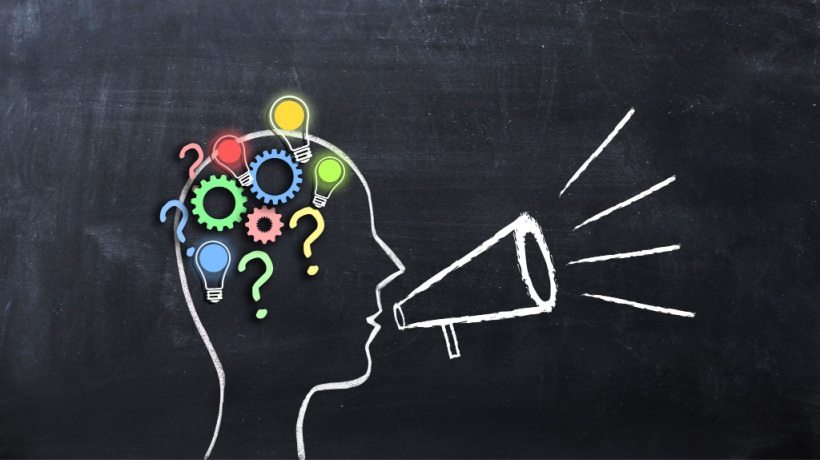The Process And Challenges Of Digitization Of Learning Content
Imagine now that you are at home and your washing machine is damaged. It starts pouring water through the door, but you cannot stop it or open the drum. On the table, you still have the dictionary, a newspaper, the washing machine manual, the phone book, and the poems. Which one would you use to solve the problem?
Would it be nice to sit down and read carefully the definition of "washing machine" given by the dictionary? Would you look how the company that manufactured the washing machine is doing at the newspaper? Would you read a poem to the washing machine to reassure it?
You would probably go to the washing machine manual first to try to stop it, and maybe, after picking up the water, to the phone book to call the technician and come to fix it.
Once you have the washing machine manual in hand, would you start reading it from the first page, word by word, phrase by phrase, until you find the solution to your problem - including the 17 languages in which the manual is written? If you are in your right mind, you would go to the index in search of a section that says "in case of failure" or something similar.
What has happened in this process?
- First of all, we have identified a need. Make the washing machine stop releasing water, before the neighbor below us comes up with an ice ax in his hand ready for anything in order to stop raining on his floor.
- Second, we have identified the tool that will allow us to solve the problem (the washing machine manual).
- Thirdly, we have used the logic that underlies that tool (the manual index) to identify the section that most interests us at this time.
Each one of the presented tools allows us to have access to a specific type of knowledge: The dictionary to a theoretical knowledge, the manual of use to a procedural knowledge, the newspaper to a chronological knowledge, the telephone guide to an instrumental knowledge, and the poetry to an emotional knowledge.
Do you imagine what would happen to us if we did not know what kind of knowledge we need to apply at all times? If we had a romantic date and we were confused with the clues given to us, we could go around saying things like: "Is it not true, angel of love, that in the program for white bleach the clothes shine and 'breathe' better?" The world, as we know it, requires us to correctly apply the type of knowledge required in each situation.
Would an Australian Aboriginal or an Amazonian Indian have these clues? Could they identify the problem with the washing machine? Could they tell which tool would help them solve it? Could they handle it once identified? Probably not. This knowledge does not accompany us from the cradle. It is learned, and is part of a literacy process understood in a broad sense.
The Order In A Digital Environment
Have you ever read a dictionary in full? However, if you needed it, you would know how to find a particular term in a couple of seconds. In this case, the clue that underlies its use is not the index, but the alphabetical order. It is so powerful that even the English, who drive on the left, measure the distance in miles, the weight in microns, and the temperature in Fahrenheit degrees, and have also voted for Brexit, still recognize that the first letter of the alphabet is the "a" and the last one is the "z".
Would it make any sense to have a dictionary that presented its content in a random way? This would force us to memorize the order in which the terms are presented. In each update of the volume we would be sweating ink (fearing the two months following the receipt of the new dictionary, in which we would have to identify the new terms first), learn where the terms are now located and remove from our memory the ones that have fallen into disuse. It would be a disaster!
Digitization Of Learning Content: A Case Study
Let us now turn to the digital environment: Imagine that we work as teachers in an institute in Madrid. Our school has signed up to an inter-school collaboration program of the European Union through which a team of teachers from different countries have to collaborate for the development of the curriculum of a subject. We have been selected by our center to be part of that team.
- The first step we have to take is to have a virtual meeting with the team to introduce ourselves, where the project manager will explain what this is all about and what is it expected of each of us. Also in this meeting work teams, tasks and deadlines to follow will be established.
- The second step will consist of collaborative work meetings with teachers who are part of our work team to carry out assigned tasks. Imagine that this consists of elaborating the content of the subjects of the course that will be exposed in the platform where all students of the centers will participate in.
- Once the content is created, we will have to send it to the project manager for approval, but we only want to send the final version, without access to the supporting documents that we have been creating throughout the process.
- The fourth step, once the content is approved, will be to take it to a digital environment, transforming it into an online course.
- Once the course has been created, we will have to publish it on an online training platform from which we can create training plans and connect with the students of each group.
Would we know what we need in each of the steps?
The Steps Of Digitization Of Learning Content In Distributed Teams
Lets have a look:
- For a virtual meeting, we will need to keep a conference call, preferably with video, and present the documents to a group of people located in different places. It is a real-time auditory and visual communication.
- For collaborative team and distance work, we will need to share files and information so that all team members can modify files simultaneously and participate equally in the creative process. This is a co-creation in real time.
- To send a large file to another person, we need to upload it to the cloud so the other person can download it from a private environment. It is about sharing knowledge.
- To transform the content created into a online course, we need to use a language that is "responsive", that is a language that can be read without problems from any type of device. It is a procedural knowledge.
- To make content accessible to students, create groups, and track learners, we will need to upload it to an eLearning platform. It is a remotely transmission of knowledge with traceability.
If we had the following icons on the desktop of our computer, would we know which to choose to solve the identified needs for each of the steps to follow without having to open them?

- The first icon on the left corresponds to an online training platform, which would allow us to attend the fifth step of the process.
- The second icon is a file sharing tool in the cloud, which would facilitate the work of the third step of the process.
- The third icon corresponds to a virtual classroom with video conference, digital slate, and file sharing, which would allow us to address the need of the first step.
- The fourth icon is a tool that allows several people to work on the same document simultaneously from different places on the planet, which would help us to address the need of the second point.
- The last icon corresponds to an editor of HTML5, a language that allows to generate online content that can be read on any device and that is compatible with SCORM; that is to say, with the language that the platforms of online training use to follow the students' progress during the course. It would help us to address the fourth point of the process.
Let's imagine that we select the third icon on the left (a virtual classroom) to maintain the conference where the project manager will share with us the presentation of the project plan. Do we know which are the main keys of a virtual classroom that allow us to participate without needing to know all functionalities?
Actually, in this case, if our role is that of assistants, it would be sufficient to know that the rapporteur will communicate with us via audio or via audio and video, that we have at our disposal a chat to send questions to the speaker without interrupting them, and that also we can get out of the conversation whenever we want.
Although this kind of tools include many more features (recording the meeting, allowing others to see our desktop, launching surveys, creating groups, etc.), at that particular time we will not use them, and therefore we will not need to know where they are or how to use them to be successful during the virtual meeting.
The Problem And A Solution
The same skill we have in the analog environment is the one we must have in the digital environment. But training using tools that allow us to communicate, collaborate, share, create, or impart knowledge does not mean steeping through manuals that teach us every detail of these tools.
If we were to choose a course to learn how to make homemade mayonnaise, which of the following 2 would we choose?
- A teacher who tells us that we must learn the complete manual of use of the mixer, including addresses, telephones, and emails for customer and technical service as listed in the manual.
- A teacher who tells us that it is enough to know that you have to plug the mixer in and push the button for it to work, but the important thing in making mayonnaise is knowing about the order in which we add the oil and the eggs and the rhythm of our other hand with which we beat the mixture so that the mayonnaise is not cut. This teacher proposes to teach us through practice from the first moment.
Just as for a child who learns how to read it would not be a good idea to ask them to copy the first 15 pages of the phone book to practice letters and numbers, and we would not expect them to develop an affection by for reading, we should not expect a teacher to develop a crazy passion for new technologies if instead of helping them to identify their needs and the types of tools that exist to address those needs, as well as to know the keys that underlie those tools, we are dedicated to inflating them to application manuals of which they will only use 10% each time.
From this perspective, from LearningLovers.org, we want to develop a specific free training in innovation and new technologies applied to learning, addressed to all the profiles that participate in the training process, in order to give them the keys to digital knowledge without forcing them to go through a myriad of instruction manuals that are for the most part boring and superfluous. Do you want to participate in the process? Join us on LearningLovers.org!









